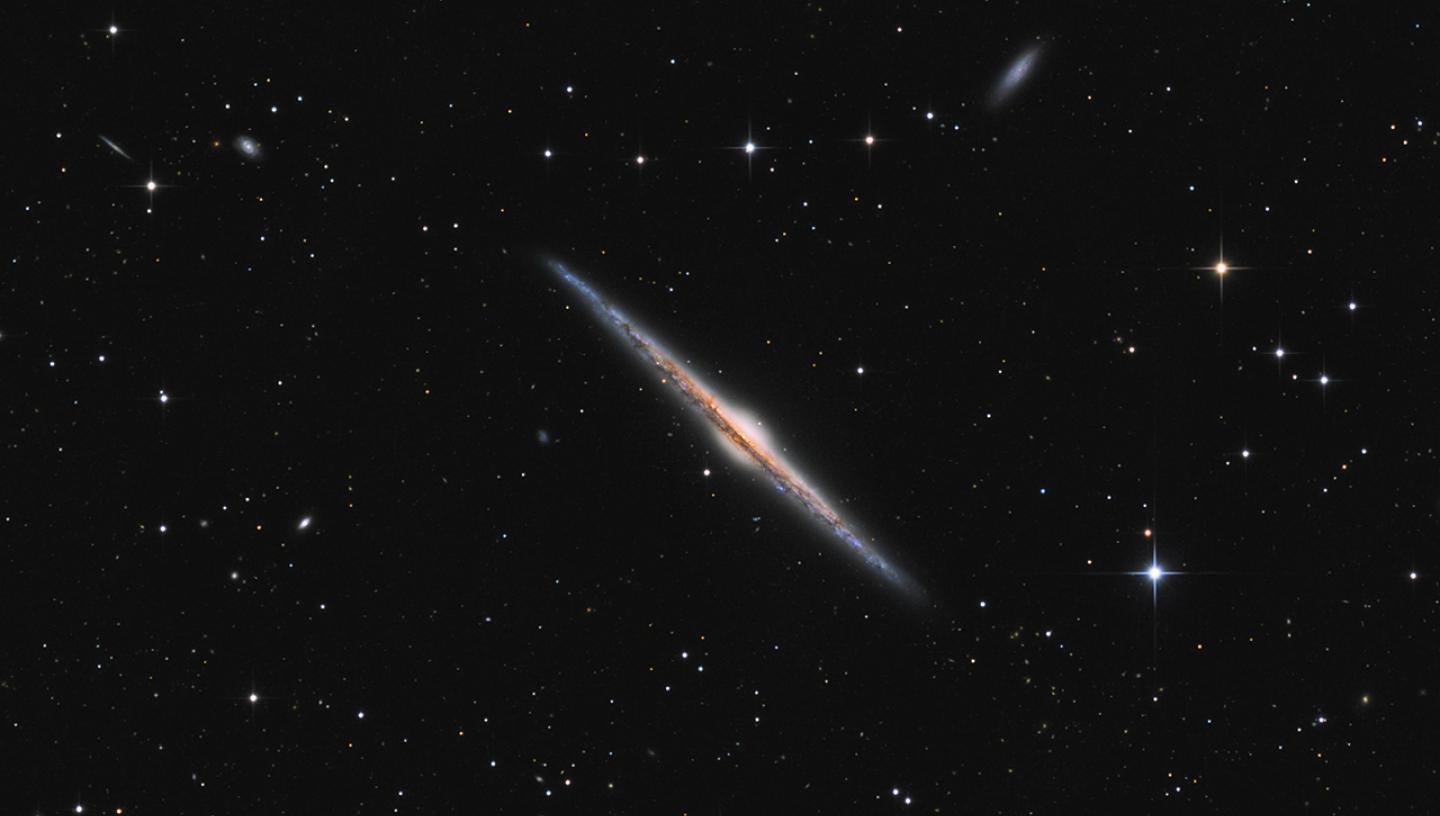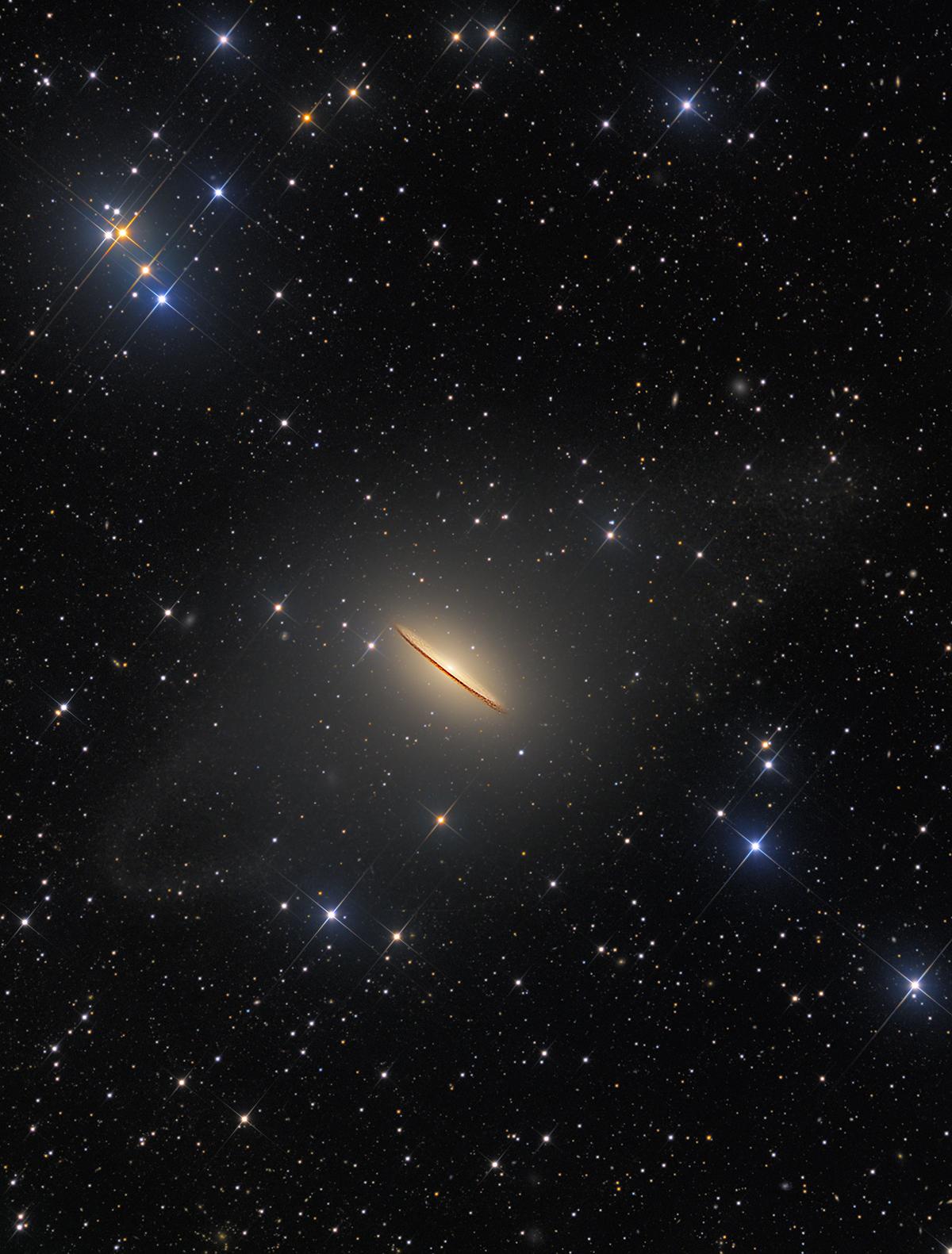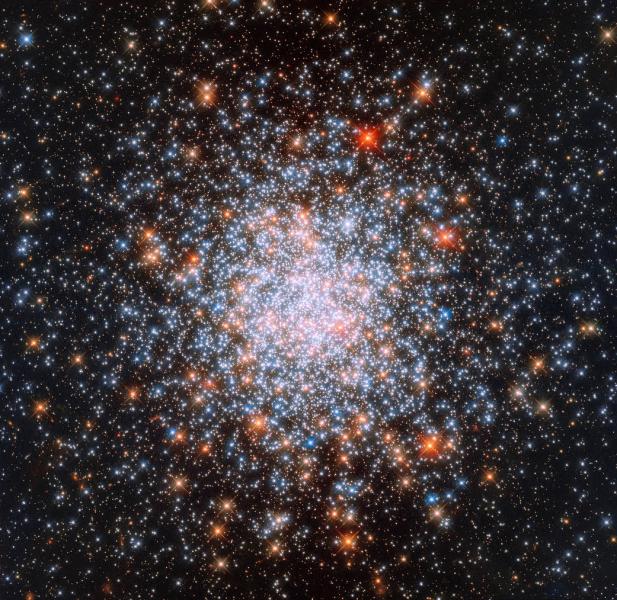
Discover what to see in May's night sky including the Eta Aquariid meteor shower, the crescent Moon next to the star Pollux, and galaxies in the spring sky.
Top 3 things to see in the night sky in May 2024:
-
5/6 May - see the peak of the Eta Aquariid meteor shower
-
Throughout the month - find galaxies in the spring sky
-
12 May - see the crescent Moon next to the star Pollux
See June's night sky highlights
Look Up! Podcast
Subscribe and listen to the Royal Observatory Greenwich's podcast Look Up! As well as taking you through what to see in the night sky each month, Royal Observatory astronomers pick two space news stories to talk about.
This month, Jess and Julienne talk through some of May's must-see cosmic objects and discuss two news items: the discovery of the biggest stellar mass black hole in our galaxy and an update on the Dragonfly mission.
The constellation of Boötes
High in the southern sky throughout May is the star Arcturus, which is within the constellation of Boötes. This is the fourth brightest star in the whole night sky, and so is visible for those viewing from light polluted areas as well as those lucky enough to have darker skies.
Arcturus appears so bright because it is reasonably close to us at only 37 light years away, and because it is a red giant star. This means it is no longer a main sequence star, like our Sun - it's reached the next stage of its evolution and expanded to become 25 times the size of the Sun and 170 times as luminous.
If you’re looking for Arcturus in the sky, you can use the handle of the plough as a guide to ‘arc to Arcturus’. You can then continue across the sky and ‘speed on to Spica’ the brightest star in Virgo, the constellation just below Boötes.
Boötes represents a herdsman and the name Arcturus means ‘bear guardian’, possibly referring to the constellation of Ursa Major, the great bear, just next door. As it is such a bright and distinctive star, and visible in both the Northern and Southern Hemispheres, it is associated with various myths and legends. Maybe you can create your own in addition to these once you’ve spotted it in the sky.
The Moon in Gemini
As our Moon orbits the Earth, it will appear to move across our night sky night after night, crossing in front of the much more distant stars. Looking westwards at around 11pm on 12 May, you can see a waxing crescent Moon within the constellation of Gemini, about two and a half degrees away from the star Pollux.
This is equivalent to the width of about two fingers if you’re holding your hand up at arm's length and using it to measure distances in the sky. Pollux is an interesting star to consider on its own. It’s the brightest star in Gemini and the 17th brightest in the night sky, only 34 light years away from us and a giant star about 9 times wider than the Sun. It also has a planet, a gas giant twice the mass of Jupiter named Thestias.
Galaxies
Spring is known as ‘galaxy season’ due to the variety of galactic wonders available to anyone with a telescope, or even a pair of binoculars for the brightest of them!
We mentioned a few around the constellation of Leo in our April night sky highlights, but other favourites in the spring sky include the Needle Galaxy and Sombrero Galaxy.
The Needle Galaxy, or NGC 4565, is in the constellation of Coma Berenices. It’s a well-known example of an ‘edge-on’ spiral galaxy, meaning we see it as a bar (or needle!) of stars across the sky, rather than the spiral arms being visible.
With a magnitude of +9.5 it's technically visible with large binoculars, but it’s easier to see with a telescope. This galaxy is around 30 million light years away and larger than the Milky Way, containing approximately one trillion stars. It was first discovered by William Herschel in 1765.
The Sombrero Galaxy, or M104, is another galaxy which is thought to be an ‘edge-on’ spiral, within the constellation of Virgo. This one is apparently more like a sombrero than a needle, but similar features are visible through a telescope, with a bar of stars and a central bulge. M104’s most famous feature is the lane of dust which can be seen through a large amateur telescope, or in stunning photos from instruments like the Hubble Space Telescope. The Sombrero Galaxy is also around 30 million light years away, but is smaller than the Milky Way, with an estimated 100 billion stars. Through a pair of binoculars, it will look like a fuzzy patch of light, but more features will become visible with increasingly powerful telescopes.
If that isn’t enough of a galactic showcase for you, you could also have a look at the Virgo cluster. This is a collection of a few thousand galaxies within Virgo, with a couple of hundred viewable through your own telescope.
Included in this cluster is M87. It's not the most spectacular to view as it is a seemingly featureless elliptical galaxy, but it's one of the most interesting to black hole enthusiasts as it’s the home of M87*, the supermassive black hole first imaged by the Event Horizon Telescope team in 2019. You won’t be able to see any sign of this black hole with your own telescopes, but you can consider its awe-inspiring size (6.5 billion times the mass of the Sun) as you admire the light from the stars around it!
The Eta Aquariids meteor shower
The Eta Aquariid meteor shower peaks early in May, on the 5-6 of the month. Conditions this year could be favourable, as the Moon is in its waning gibbous phase and so during the early mornings around the peak of the shower there will be no light from it obscuring your view.
However, this shower isn’t fantastic from the Northern Hemisphere. The radiant, the point where the meteors appear to originate from, is the star Eta Aquarii, within the constellation of Aquarius. In May, Aquarius is very low in the sky and difficult to see. For the UK, it is only just above the horizon at 3am, before the sunrise wipes out our view. You don’t need to see the radiant of a meteor shower to catch shooting stars, but you’re more likely to see them if the radiant is higher above the horizon.
If you do catch any meteors from this shower, their parent comet is the most famous of all, Halley’s Comet. This comet is named after the Royal Observatory Greenwich’s second Astronomer Royal as he was the first person, back in the 1700s, to realise it must be a periodic comet. It will next appear in our skies in around 2061.
May 2024 in the Southern Hemisphere
For those in the Southern Hemisphere, you are much more likely to catch the peak of the Eta Aquariid meteor shower, assuming you have clear skies and the ability to stay up late on the night of 4-5 May!
Just like in the Northern Hemisphere, there are also many deep sky objects visible from the Southern Hemisphere at this time of year. Alongside galaxies, there are also clusters scattered across the night sky.
Clusters of stars come in two types: open and globular, but both refer to groups of stars that are gravitationally bound together, as opposed to just appearing close together from our point of view, and they are found within the Milky Way at varying distances from the Solar System.
Open clusters are less dense collections of stars, normally more recently formed from stellar nurseries. Globular clusters are more densely packed regions of old stars, often found in the ‘halo’ orbiting the Milky Way, rather than within the disk.
One example of an open cluster of stars is the stunning ‘Jewel Box Cluster’, also known as NGC 4755. As the name suggests, this cluster of stars appears as a delicate collection of jewels nestled within the constellation of Crux. It is a group of around 100 stars, only 14 million years old and 6400 light years away. With the naked eye it will look like a fuzzy star, but binoculars or a telescope will reveal the stars within.
One example of a globular cluster in the southern sky is Omega Centauri, also known as NGC 5139. This group of over 1 million stars is 17,000 light years away and much older than the Jewel Box, with stars up to 12 billion years old. It is also bright enough to see with the naked eye, but more details can be seen with binoculars or a telescope.
Moon phases in May 2024
Last Quarter: 01 May (11:27)
New Moon: 08 May (03:22)
First Quarter: 15 May (11:48)
Full Moon: 23 May (13:53)
Planetarium Shows
Header Image and Teaser Image: Needle Galaxy © Andriy Borovkov, shortlisted in Astronomy Photographer of the Year 2018









